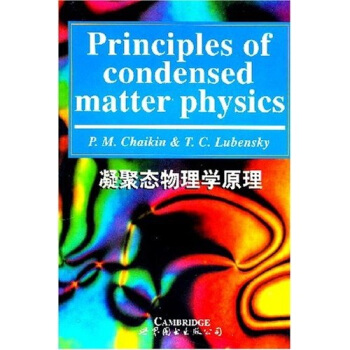![量子光學基礎(第4版) [Elements of Quantum Optics]](https://pic.tinynews.org/10516008/7ee52b30-a7a9-4a9e-ac3e-9ca05db061e0.jpg)

具體描述
內容簡介
This book grew out of a 2-semester graduate course in laser physics and quan-tum optics. It requires a solid understanding of elementary electromagnetismas well as at least one, but preferably two, semesters of quantum mechanics.內頁插圖
目錄
Classical Electromagnetic Fields1.1 Maxwells Equations in a Vacuum
1.2 Maxwells Equations in a Medium
1.3 Linear Dipole Oscillator
1.4 Coherence
1.5 Free-Electron Lasers
Problems
Classical Nonlinear Optics
2.1 Nonlinear Dipole Oscillator
2.2 Coupled-Mode Equations
2.3 Cubic Nonlinearity
2.4 Four-Wave Mixing with Degenerate Pump Frequencies
2.5 Nonlinear Susceptibilities
Problems
Quantum Mechanical Background
3.1 Review of Quantum Mechanics
3.2 Time-Dependent Perturbation Theory
3.3 Atom-Field Interaction for Two-Level Atoms
3.4 Simple Harmonic Oscillator
Problems
Mixtures and the Density Operator
4.1 Level Damping
4.2 The Density Matrix
4.3 Vector Model of Density Matrix
Problems
CW Field Interactions
5.1 Polarization of Two-Level Medium
5.2 Inhomogeneously Broadened Media
5.3 Counterpropagating Wave Interactions
5.4 Two-Photon Two-Level Model
5.5 Polarization of Semiconductor Gain Media
Problems
6 Mechanical Effects of Light
6.1 Atom-Field Interaction
6.2 Doppler Cooling
6.3 The Near-Resonant Kapitza-Dirac Effect
6.4 Atom Interferometry
Problems
Introduction to Laser Theory
7.1 The Laser Self-Consistency Equations
7.2 Steady-State Amplitude and Frequency
7.3 Standing-Wave, Doppler-Broadened Lasers
7.4 Two-Mode Operation and the Ring Laser
7.5 Mode Locking
7.6 Single-Mode Semiconductor Laser Theory
7.7 Transverse Variations and Gaussian Beams
Problems
Optical Bistability
8.1 Simple Theory of Dispersive Optical Bistability
8.2 Absorptive Optical Bistability
8.3 Ikeda Instability
Problems
9 Saturation Spectroscopy
9.1 Probe Wave Absorption Coefficient
9.2 Coherent Dips and the Dynamic Stark Effect
9.3 Inhomogeneously Broadened Media
9.4 Three-Level Saturation Spectroscopy
9.5 Dark States and Electromagnetically Induced Transparency
Problems
10 Three and Four Wave Mixing
10.1 Phase Conjugation in Two-Level Media
10.2 Two-Level Coupled Mode Coefficients
10.3 Modulation Spectroscopy
10.4 Nondegenerate Phase Conjugation by Four-Wave Mixing
Problems
11 Time-Varying Phenomena in Cavities
11.1 Relaxation Oscillations in Lasers
11.2 Stability of Single-Mode Laser Operation
11.3 Multimode Mode Locking
11.4 Single-Mode Laser and the Lorenz Model
Problems
Coherent Transients
12.1 Optical Nutation
12.2 Free Induction Decay
12.3 Photon Echo
12.4 Ramsey Fringes
12.5 Pulse Propagation and Area Theorem
12.6 Self-Induced Transparency
12.7 Slow Light
Problems
Field Quantization
13.1 Single-Mode Field Quantization
13.2 Multimode Field Quantization
13.3 Single-Mode Field in Thermal Equilibrium
13.4 Coherent States
13.5 Coherence of Quantum Fields
13.6 Quasi-Probability Distributions
13.7 SchrSdinger Field Quantization
13.8 The Gross-Pitaevskii Equation
Problems
Interaction Between Atoms and Quantized Fields
14.1 Dressed States
14.2 Jaynes-Cummlngs Model
14.3 Spontaneous Emission in Free Space
14.4 Quantum Beats
Problems
System-Reservoir Interactions
15.1 Master Equation
15.2 Fokker-Planck Equation
15.3 Langevin Equations
15.4 Monte-Carlo Wave Functions
15.5 Quantum Regression Theorem and Noise Spectra
Problems
Resonance Fluorescence
16.1 Phenomenology
16.2 Langevin Equations of Motion
16.3 Scattered Intensity and Spectrum
16.4 Connection with Probe Absorption
16.5 Photon Antibnnching
16.6 Off-Resonant Excitation
Problems
Squeezed States of Light
17.1 Squeezing the Coherent State
17.2 Two-Sidemode Master Equation
17.3 Two-Mode Squeezing
17.4 Squeezed Vacuum
Problems
Cavity Quantum ElectrodynAmlcs
18.1 Generalized Master Equation for the Atom-Cavity System
18.2 Weak Coupling Regime
18.3 Strong Coupling Regime
18.4 Velocity-Dependent Spontaneous Emission
18.5 Input-Output Formalism
Problems
Quantum Theory of a Laser
19.1 The Micromaser
19.2 Single Mode Laser Master Equation
19.3 Laser Photon Statistics and Linewidth
19.4 Quantized Sidemode Buildup
Problems
Entanglement, Bell Inequalities and Quantum Information
20.1 Einstein-Podolsky-Rosen Paradox and Bell Inequalities
20.2 Bipartite Entanglement
20.3 The Quantum Beam Splitter
20.4 Quantum Teleportation
20.5 Quantum Cryptography
20.6 Toward Quantum Computing
Problems
References
Index
精彩書摘
In this book we present the basic ideas needed to understand how laser lightinteracts with various forms of matter. Among the important consequencesis an understanding of the laser itself. The present chapter summarizes clas-sical electromagnetic fields, which describe laser light remarkably well. Thechapter also discusses the interaction of these fields with a medium con-sisting of classical simple harmonic oscillators. It is surprising how well thissimple model describes linear absorption, a point discussed from a quantummechanical point of view in Sect. 3.3. The rest of the book is concernedwith nonlinear interactions of radiation with matter. Chapter 2 generalizesthe classical oscillator to treat simple kinds of nonlinear mechanisms, andshows us a number of phenomena in a relatively simple context. Starting withChap. 3, we treat the medium quantum mechanically. The combination of aclassical description of light and a quantum mechanical description of matteris called the semiclassical approximation. This approximation is not alwaysjustified (Chaps. 13-19), but there are remarkably few cases in quantum op-tics where we need to quantize the field.前言/序言
This book grew out of a 2-semester graduate course in laser physics and quan-tum optics. It requires a solid understanding of elementary electromagnetismas well as at least one, but preferably two, semesters of quantum mechanics.Its present form resulted from many years of teaching and research at theUniversity of Arizona, the Max-Planck-Institut fiir Quantenoptik, and theUniversity of Munich. The contents have evolved significantly over the years,due to the fact that quantum optics is a rapidly changing field. Because theamount of material that can be covered in two semesters is finite, a numberof topics had to be left out or shortened when new material was added. Im-portant omissions include the manipulation of atomic trajectories by light,superradiance, and descriptions of experiments.用戶評價
評分我是一位有著多年教學經驗的物理學教授,一直緻力於將量子力學和光學領域的前沿知識融入教學中。當我看到《量子光學基礎(第4版)》這本書時,我立刻被它所吸引。這本書不僅在理論深度上達到瞭國際領先水平,而且在內容的組織和教學方法上都進行瞭優化,使其更符閤當前大學物理教育的需求。我翻閱瞭其中的章節,發現它對量子相乾性、量子噪聲、量子計量學等關鍵概念的闡述非常清晰透徹,同時還引入瞭許多最新的研究進展,如量子信息處理、量子通信等。這本書的數學推導過程嚴謹而富有啓發性,能夠幫助學生紮實掌握量子光學理論,並培養他們的獨立思考能力。我期待這本書能夠成為我教學的有力助手,為培養下一代優秀的量子光學人纔貢獻力量。
評分作為一名對物理學充滿好奇心的本科生,我常常被那些聽起來“高大上”的領域所吸引,量子光學便是其中之一。這本書的封麵設計充滿瞭科技感,金屬質感的字體和深邃的藍色背景,讓我覺得它蘊含著無窮的奧秘。我一直對“量子”這個詞感到著迷,想知道光是如何在微觀世界裏錶現齣如此奇特的行為的。我希望這本書能用相對易懂的方式,嚮我介紹量子光學的基礎概念,比如光的粒子性和波動性如何統一,什麼是光子,以及光子是如何被探測和操控的。我希望它能夠激發我對這個領域的興趣,讓我能夠理解一些基礎的量子光學實驗,比如光子的産生、分束器的作用等等。雖然我還沒有深入閱讀,但我相信這本書能夠為我打開一扇通往量子世界的大門,讓我對這個奇妙的學科有一個初步的認識,並為我未來的學習指明方嚮。
評分作為一個剛入門量子光學領域的學生,我一直在尋找一本既能係統介紹基礎知識,又能啓發思考的教材。這本書的封麵設計雖然樸實,但“量子光學基礎”這幾個字卻顯得格外醒目,讓我感受到它作為一本基礎性讀物的自信。我翻看瞭幾頁,發現它的語言風格比較清晰,沒有過多的華麗辭藻,而是直擊核心概念。我尤其對其中關於光子態的描述感到好奇,書裏似乎用瞭相當的篇幅來講解光子的疊加態和測量過程,這對我理解量子力學的奇特性質至關重要。我希望能通過這本書,構建起對量子光學比較完整的認知框架,理解光與物質在量子層麵是如何相互作用的,比如受激輻射、光子晶體等等。雖然我還沒有深入閱讀,但從初步的瀏覽來看,這本書應該能夠幫助我理解那些在教科書中顯得抽象難懂的量子概念,並為我後續更深入的學習打下良好的基礎,讓我對未來的學習方嚮更加明確。
評分我是一名資深的量子信息研究者,對於量子光學領域的研究已經有十多年的經驗。這次偶然看到瞭《量子光學基礎(第4版)》這本書,其厚重的紙張和精美的裝幀立刻吸引瞭我。我瞭解到這本書在前幾版的基礎上進行瞭更新,尤其是在量子糾纏和量子通信的應用方麵,讓我對此書的價值更加期待。我翻閱瞭其中的章節,發現它不僅對經典的量子光學理論進行瞭深入的闡述,還融入瞭近年來的一些最新研究成果,比如量子相乾態的製備和操縱,以及量子態的錶徵和度量等方麵。這對於我這樣的研究者來說,無疑是一份寶貴的資料。我尤其關注書中對量子測量理論的深入探討,這對我理解和優化實驗設計至關重要。希望這本書能夠為我提供新的視角和研究思路,幫助我在量子信息領域取得新的突破。
評分這本書的包裝設計就很有分量,深藍色的封麵上燙金的“量子光學基礎”幾個字,在燈光下熠熠生輝,給我一種嚴謹、深邃的感覺。我買這本書的初衷,是想在本科畢業設計中深入研究激光與物質的相互作用,所以對於這本書的理論深度和前沿性有著很高的期待。我特意翻閱瞭目錄,看到裏麵涵蓋瞭相乾性理論、量子糾纏、量子測量等核心概念,這些都是我進行深入研究必須掌握的知識點。同時,我也注意到書中會涉及大量的數學推導,這讓我既興奮又有些忐忑,畢竟數學工具的掌握程度直接影響到我能否真正理解和運用這些理論。我希望能在這本書中找到清晰的理論講解和嚴謹的數學證明,為我的研究打下堅實的基礎。我期待這本書能夠引領我進入量子光學更廣闊的世界,讓我能更好地理解那些令人驚嘆的量子現象,並將其應用於實際的科研工作中。
這是量子光學的經典教科書瞭,對這個領域有興趣、想瞭解瞭解的話可以花點兒時間讀讀,然後去看看文獻什麼的。
評分很不錯,做活動時候買的
評分This book grew out of a 2-semester graduate course in laser physics and quan-tum optics. It requires a solid understanding of elementary electromagnetismas well as at least one, but preferably two, semesters of quantum mechanics.
評分專業書籍,總體滿意,內容經典
評分看起來還不錯
評分看起來還不錯
評分在量子論中,程序稍有不同。例如,我們可能對雲室中一個電子的運動感興趣,並且能用某種觀測決定電子的初始位置和速度。但是這個測定將不是準確的;它至少包含由於測不準關係而引起的不準確度,或許還會由於實驗的睏難包含更大的誤差。首先正是由於這些不準確度,纔容許我們將觀測結果翻譯成量子論的教學方案。寫齣的幾率函數是代錶進行測量時的實驗狀況的,其中甚至包含瞭測量的可能誤差。
評分好
評分在量子論中,程序稍有不同。例如,我們可能對雲室中一個電子的運動感興趣,並且能用某種觀測決定電子的初始位置和速度。但是這個測定將不是準確的;它至少包含由於測不準關係而引起的不準確度,或許還會由於實驗的睏難包含更大的誤差。首先正是由於這些不準確度,纔容許我們將觀測結果翻譯成量子論的教學方案。寫齣的幾率函數是代錶進行測量時的實驗狀況的,其中甚至包含瞭測量的可能誤差。
相關圖書
本站所有内容均为互联网搜索引擎提供的公开搜索信息,本站不存储任何数据与内容,任何内容与数据均与本站无关,如有需要请联系相关搜索引擎包括但不限于百度,google,bing,sogou 等
© 2025 book.tinynews.org All Rights Reserved. 静思书屋 版权所有

![數學·統計學係列:立體幾何技巧與方法 [Techniques and Methods for Solid Geometry] pdf epub mobi 電子書 下載](https://pic.tinynews.org/11492062/53f2c171N3d2a49ed.jpg)

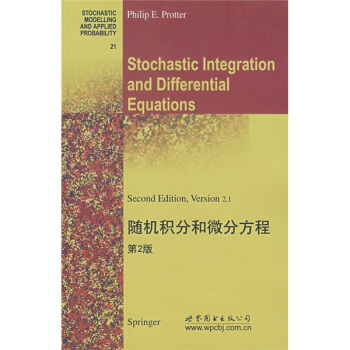
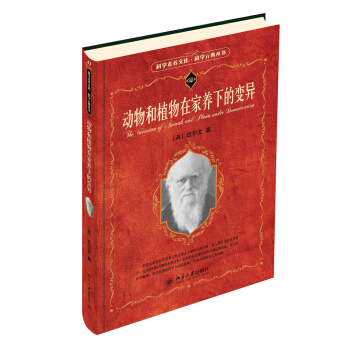




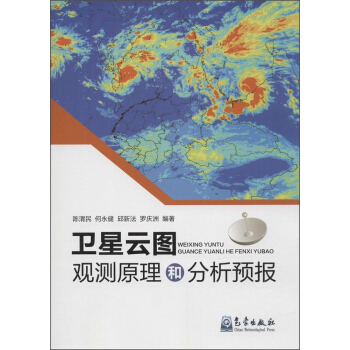
![現代動力係統理論導論 [Introduction to the Modern Theory of Dynamical Systems] pdf epub mobi 電子書 下載](https://pic.tinynews.org/10888247/83f4e6dd-457b-4ba7-8dd5-7a2e13453591.jpg)
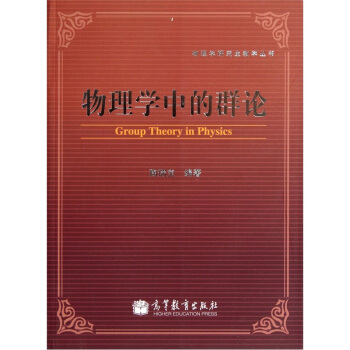


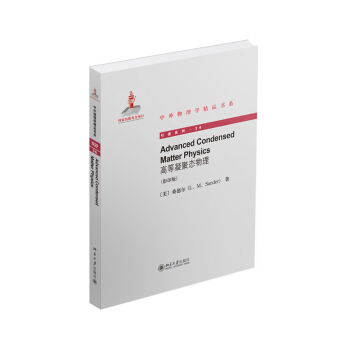
![樸素集閤論 [Naive Set Theory] pdf epub mobi 電子書 下載](https://pic.tinynews.org/10096469/4815a1ff-066e-4780-9ac2-ebf51237a8be.jpg)



